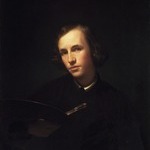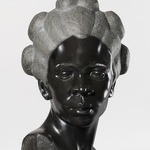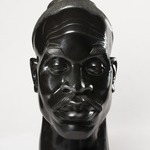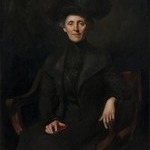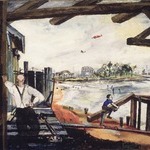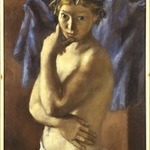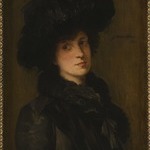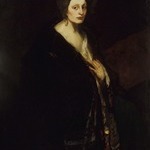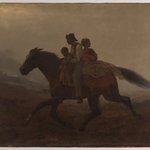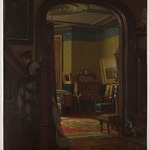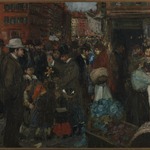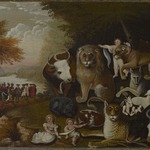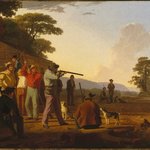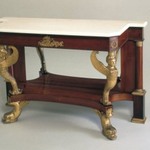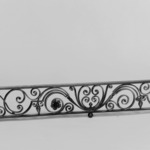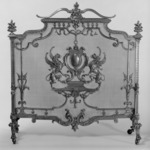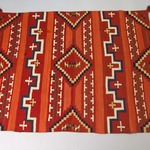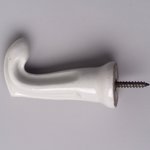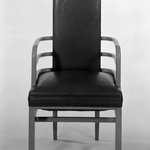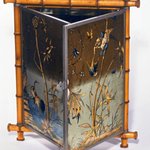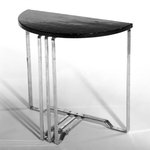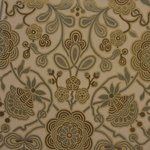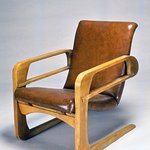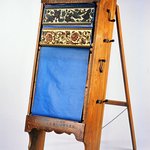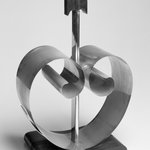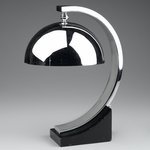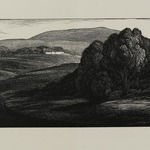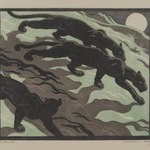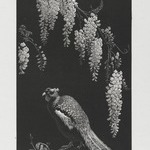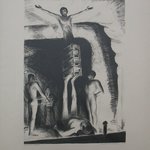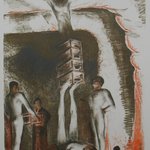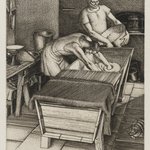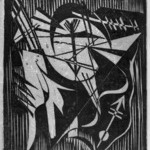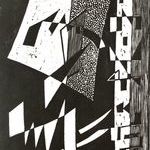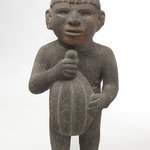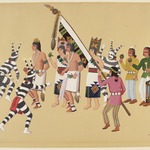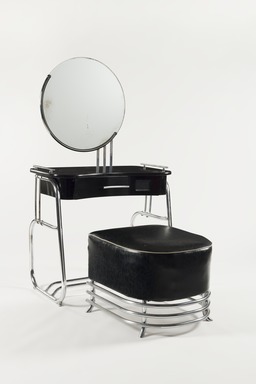
Vanity with Mirror
Decorative Arts and Design
On View: American Art Galleries, 5th Floor, Counterparts
Aerodynamic streamlining is characteristic of much American industrial and domestic design of the late 1920s and 1930s. Undecorated, curved designs, as seen here, are well suited to machine production and expressive of speed and change. The vanity and stool are made of chromed metal tubing, an innovation in furniture construction pioneered in the early 1920s by Marcel Breuer at the Bauhaus, the seminal German school for modern design. It was still a startling new material a decade later.
Although the vanity is gender-specific, this stark, modern interpretation has a limited palette and is made of new materials with hard surfaces. Updating an old form, Kem Weber transformed it for the modern woman.
Although the vanity is gender-specific, this stark, modern interpretation has a limited palette and is made of new materials with hard surfaces. Updating an old form, Kem Weber transformed it for the modern woman.
MEDIUM
Chrome-plated tubular steel, wood, glass
DATES
1934
DIMENSIONS
55 x 33 x 19 1/2 in. (139.7 x 83.8 x 49.5 cm) (show scale)



MARKINGS
no marks
SIGNATURE
no signature
INSCRIPTIONS
no inscriptions
COLLECTIONS
Decorative Arts and Design
ACCESSION NUMBER
87.123.1a-b
CREDIT LINE
Modernism Benefit Fund
PROVENANCE
Prior to 1987, provenance not yet documented; by 1987, acquired by Dyan Economakos, Palos Heights, IL;1987, purchased from Dyan Economakos by the Brooklyn Museum.
Provenance FAQ
CATALOGUE DESCRIPTION
Vanity table (a) with attached mirror (b), en suite with stool (87.123.2). Vanity composed of tubular steel structure forming base, legs and braces that support black-painted wood tabletop with drawer. Rising from rear of wood top, asymmetrically supported by three flat, vertical, chrome-plated pieces and semi-circular tubular steel piece is a circular mirror.
CONDITION: Splits in veneer on tabletop.
EXHIBITIONS
MUSEUM LOCATION
This item is on view in American Art Galleries, 5th Floor, Counterparts
CAPTION
Kem Weber (American, born Germany, 1889–1963). Vanity with Mirror, 1934. Chrome-plated tubular steel, wood, glass, 55 x 33 x 19 1/2 in. (139.7 x 83.8 x 49.5 cm). Brooklyn Museum, Modernism Benefit Fund, 87.123.1a-b. Creative Commons-BY (Photo: Brooklyn Museum, 87.123.1a-b_overall_PS22.jpg)
IMAGE
overall, 87.123.1a-b_overall_PS22.jpg. Brooklyn Museum photograph, 2024
"CUR" at the beginning of an image file name means that the image was created by a curatorial staff member. These study images may be digital point-and-shoot photographs, when we don\'t yet have high-quality studio photography, or they may be scans of older negatives, slides, or photographic prints, providing historical documentation of the object.
RIGHTS STATEMENT
Creative Commons-BY
You may download and use Brooklyn Museum images of this three-dimensional work in accordance with a Creative Commons license. Fair use, as understood under the United States Copyright Act, may also apply.
Please include caption information from this page and credit the Brooklyn Museum. If you need a high resolution file, please fill out our online application form (charges apply).
For further information about copyright, we recommend resources at the United States Library of Congress, Cornell University, Copyright and Cultural Institutions: Guidelines for U.S. Libraries, Archives, and Museums, and Copyright Watch.
For more information about the Museum's rights project, including how rights types are assigned, please see our blog posts on copyright.
If you have any information regarding this work and rights to it, please contact copyright@brooklynmuseum.org.
RECORD COMPLETENESS
Not every record you will find here is complete. More information is available for some works than for others, and some entries have been updated more recently. Records are frequently reviewed and revised, and we welcome any additional information you might have.
